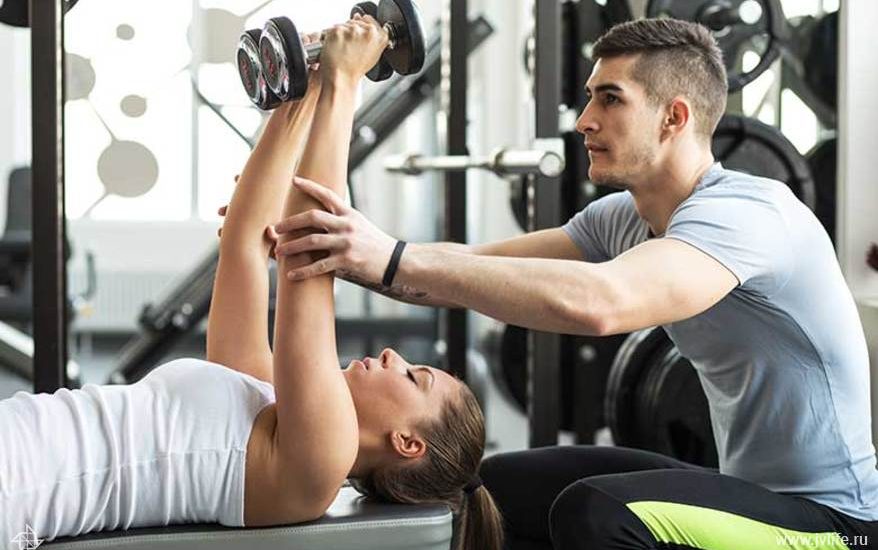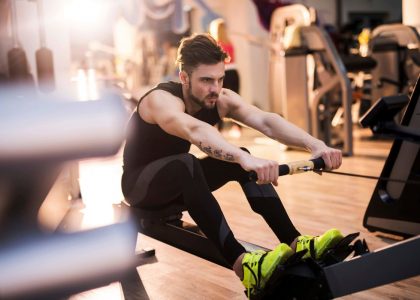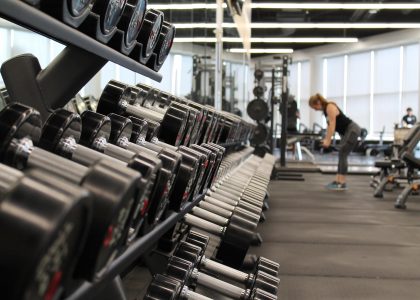This full body workout has it all.
But in this article you will learn a lot more …
You get an overview of various terms such as dynamic and static-dynamic training, AMRAP, AFAP, EMOM, etc.
Confused? No problem, you can be helped.
Just read on!
If you focus on bodyweight and full body training, you have various options for designing your training. In addition to the classic circuit training, you can also choose the more modern HIIT or Tabata and do this with methods such as:
- AMRAP (As Many Repetions As Possible),
- AFAP (As Fast As Possible) or
- EMOM (Every Minute On the Minute)
A form of training that is particularly effective, but has unfortunately been largely forgotten, is static-dynamic full-body training.
Static means that you go into a certain position during an exercise and hold it for a certain period of time. The perfect example of a static holding exercise is a simple plank or wall sitting.
Dynamic exercises are all exercises in which you perform a movement.
In the following full body workout we will combine both worlds!

Static-dynamic full-body training explained
As the name of static-dynamic full-body training suggests, with this training method you keep switching between static and dynamic exercises.
Now there are 2 possibilities to design your full body workout static-dynamic. The simple variant: You design your full body workout like a classic circle. This consists of a static and a dynamic exercise alternately. So far, so good.
The second and more difficult variant: You switch between static and dynamic execution during each exercise.
How should that look?
For example, you decide to complete a circle of 6 exercises for 3 rounds. You do each exercise for 60 seconds, then have a 10-second break and then switch to the next exercise.
Let’s take the squat as a simple example: Instead of doing as many squats as possible for 60 seconds, you do as many squats as possible for 15 seconds. After 15 seconds you hold the squat at about 90 ° in the knee joint for another 15 seconds and thus switch between static and dynamic execution 2 more times.
In just one minute you have an exercise and your muscles are statically and dynamically trained.
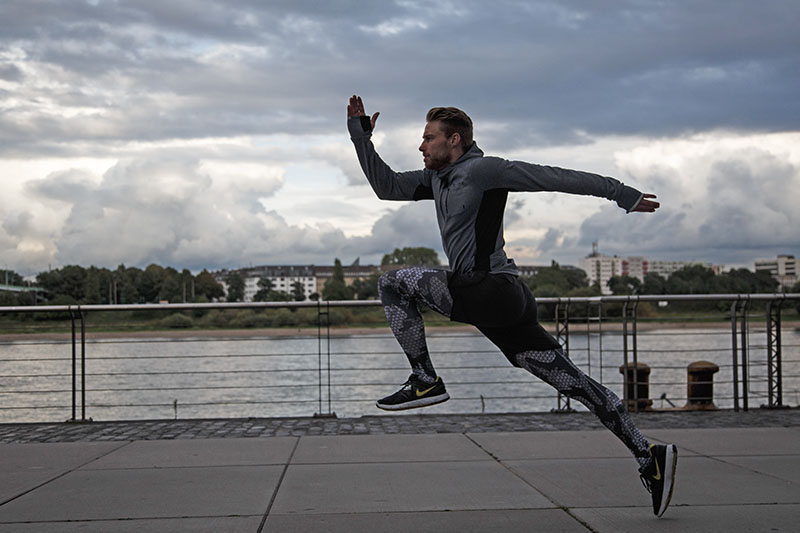
Static-dynamic full-body workout – the advantages
Every form of training has its advantages.
The great advantage of a static-dynamic full-body workout is that you train particularly functionally.
You not only train the endurance of your muscles, similar to the AMRAP and AFAP training methods, but you also improve your static holding power at the same time.
If done correctly, static exercises are particularly gentle on the joints, but at the same time ensure that you consciously build up body tension and you also achieve a better feeling for your posture.
6 dynamic exercises for your full body workout
In this full body workout I have come up with 6 exercises that you can use to train your whole body quickly and easily.
Best of all: You can also use each of these exercises for static dynamic training or combine them with the static exercises that Pat presents in my blog to create an even more intense workout.
1. Pushups
The hands are below your shoulders.
The abdomen is tense to avoid a hollow back. Your elbows point towards your hips and are snug against your body.
In the static position, the elbows should be bent to 90 °.
2. Squats
The feet are about hip-width apart and the toes point slightly outwards.
Now you consciously push your buttocks backwards.
Make sure that your knees don’t fall in and your back stays straight. Again, you keep the static position at about 90 °.
If you find this position difficult or painful, straighten your legs a little.
3. Rowing situps
Rowing situps are already one of the more demanding bodyweight exercises.
Coordination is required here. Master situps and legraises first before attempting this exercise.
Pull your upper and lower body together at the same time and try to only touch the floor with your bottom and lower back during the entire exercise. It is held in the extended position.
4. Swimmer
The swimmer is one of my favorite exercises because on the one hand it strengthens the back, but at the same time it mobilizes the shoulders.
You start with your arms stretched forward. Now you turn your palms outwards and stretch your arms towards your bottom.
In the final position, your palms point upwards and are above your buttocks. Here you hold the static position with your arms stretched forward.
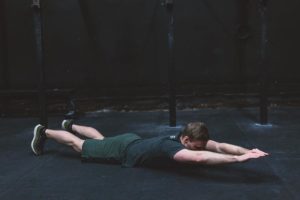
5. Crab
Sit on the floor. Place your feet about hip-width and at a 90 ° angle in front of you.
With your hands you support yourself lightly behind your upper body on the floor. Fingertips point to your feet.
Now you slowly push your hips upwards until your upper body forms a straight angle and your knee joints form a 90 ° angle. That is exactly the position that you have to hold in the static variant.
6. Leg Raises
The perfect exercise to train your body tension.
Put tension on your stomach until there is no more space between your back and the floor. Now lift your legs straight off the floor so that there is a right angle in your hips.
Lower your legs again without your feet touching the ground. In the static version, you try to keep your legs as low as possible.
Your full body workout with a training plan
Now that you know how to do the 6 exercises, the right plan is important.
I’ve put together a HIIT workout for you today.
| Pushups | 40 seconds power | 20 seconds pause |
| Squats | 40 seconds power | 20 seconds pause |
| Row Situps | 40 seconds power | 20 seconds pause |
| Swimmer | 40 seconds power | 20 seconds pause |
| Crab | 40 seconds power | 20 seconds pause |
| Leg Raises | 40 seconds power | 20 seconds pause |
Here you can also download your full body workout with a static-dynamic training plan as a PDF.
Pat’s guest article will soon be online on my blog fitnessagony.de. He provides you with 6 static exercises and combines my and his exercises into a mercilessly ingenious full body workout.



